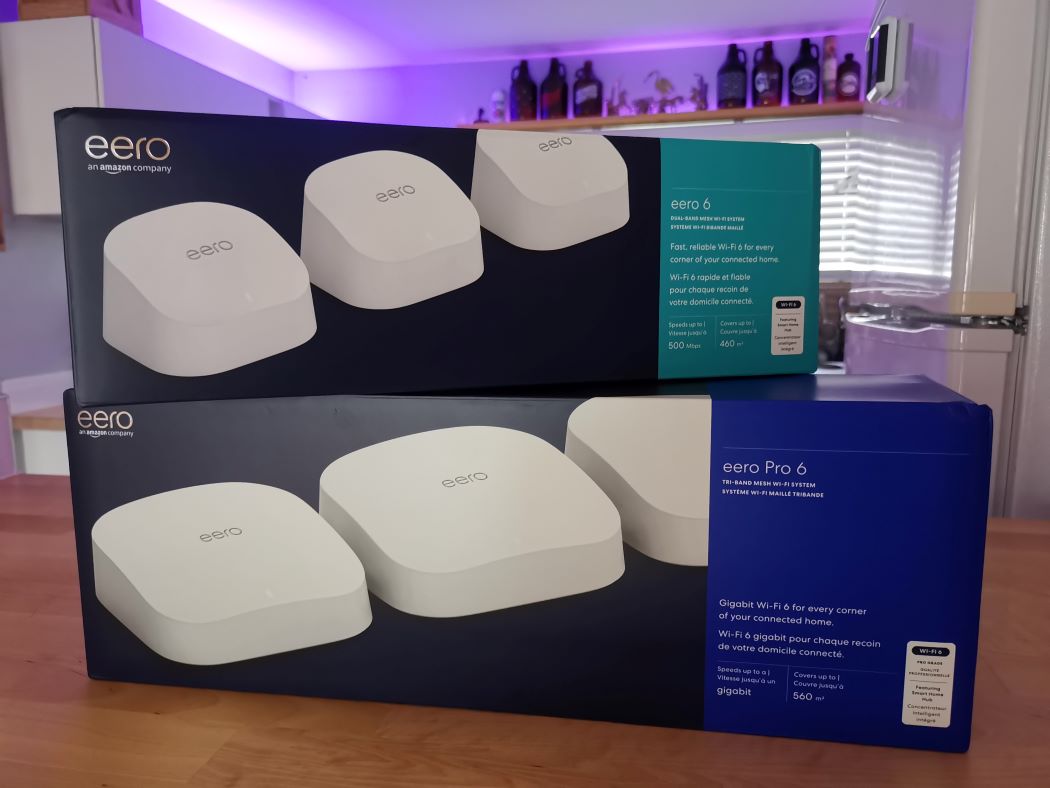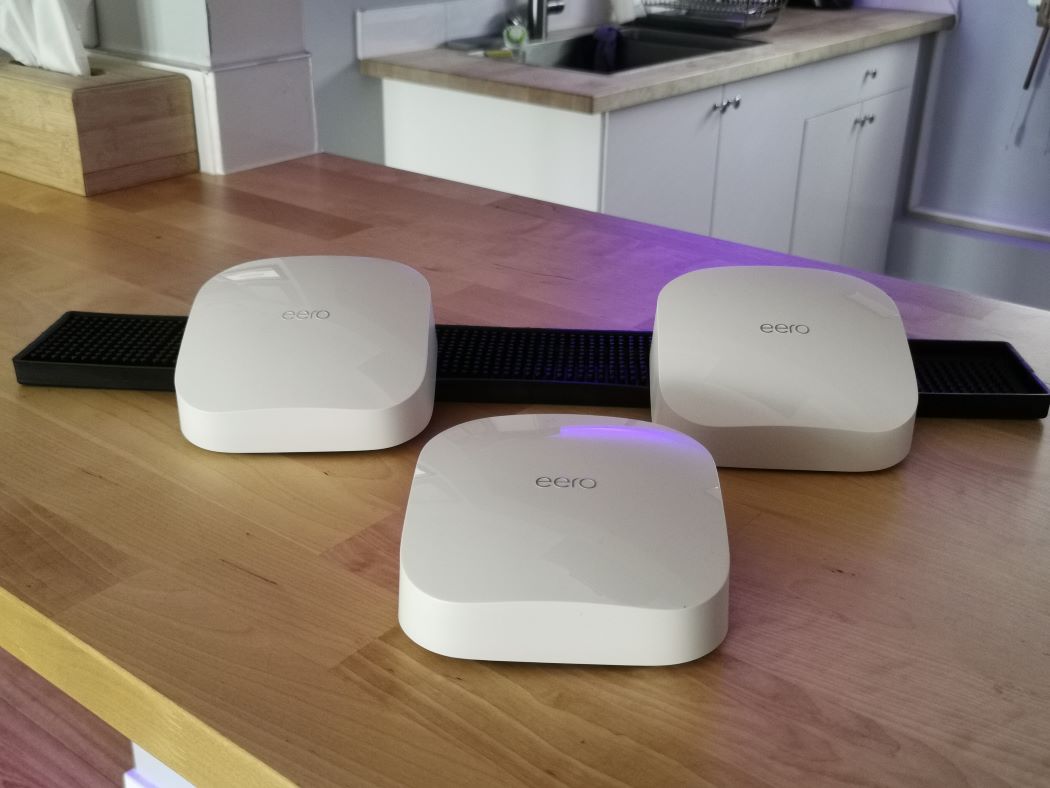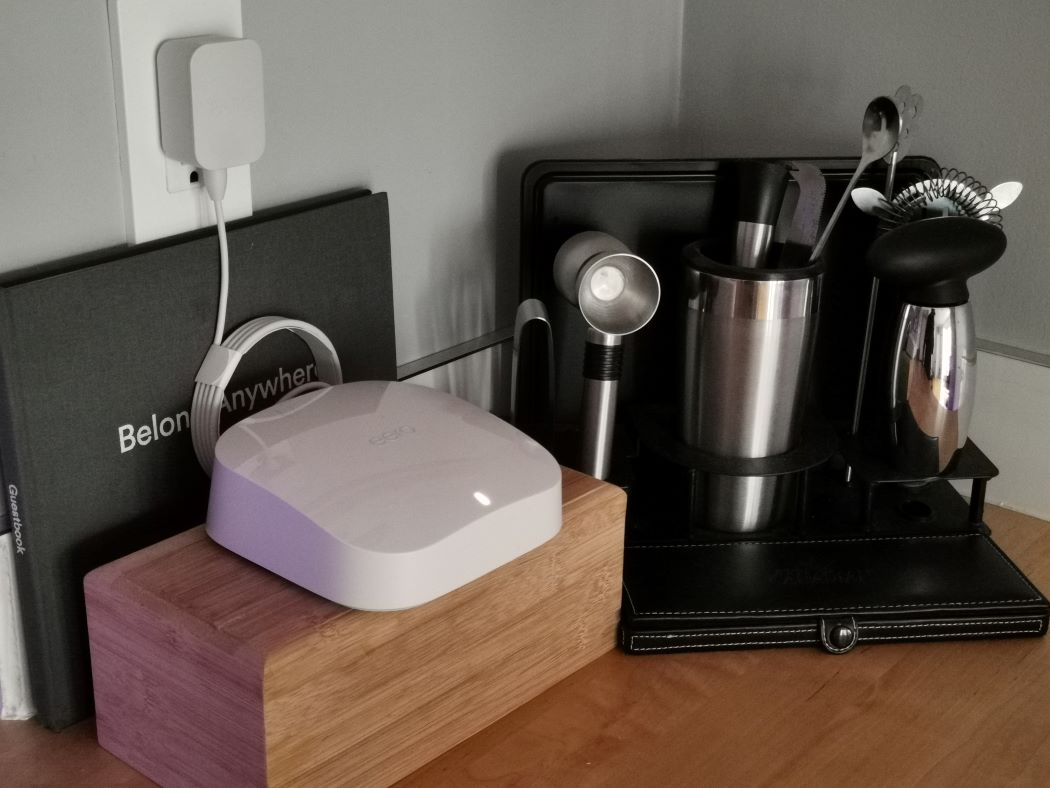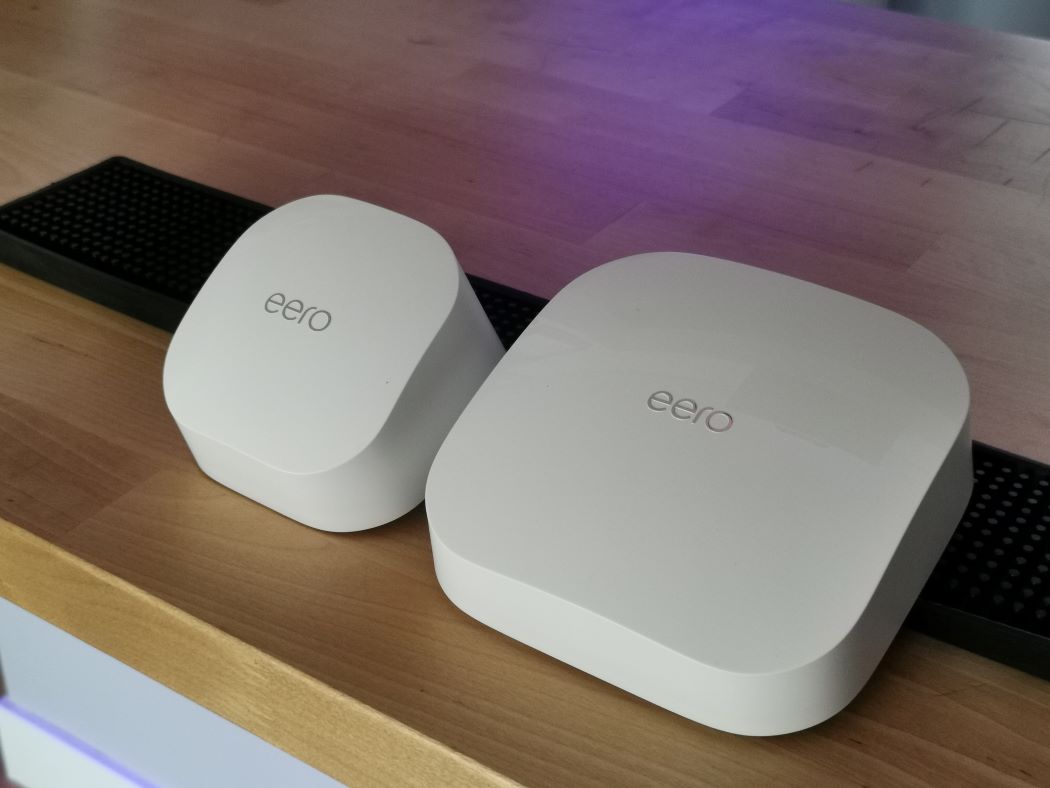
The backbone of any smart home is a solid Wi-Fi network. With the introduction of Wi-Fi 6, there’s a flood of new wireless systems hitting the market. Every home is different so it’s important to select the right solution that meets your particular needs. In this review, I’m looking at the new eero 6 and eero Pro 6 Wi-Fi systems. Eero is an Amazon company, and a brand I’ve never reviewed before. I’m a huge Wi-Fi nerd so I’m looking forward to setting it up and measuring its performance around my home and property. Let’s begin at the unboxing to see what’s included.
Unboxing the eero 6 and eero Pro 6
Unlike traditional routers, eero is a Wi-Fi 6 mesh system. Both the eero 6 and eero Pro 6 come with three satellites. These are placed around a home to blanket the entire area with a strong Wi-Fi signal.
 The eero 6 has one main wired satellite that connects to a modem. It has two Ethernet ports, one for the modem and another to connect devices to the network (i.e smart home hub). The other two wireless eero 6 satellites have a single USB-C port for the power adapter.
The eero 6 has one main wired satellite that connects to a modem. It has two Ethernet ports, one for the modem and another to connect devices to the network (i.e smart home hub). The other two wireless eero 6 satellites have a single USB-C port for the power adapter.
The eero Pro 6 has three identical satellites with two Ethernet ports on the back. Any of these satellites can connect to the modem. Each system includes the power adaptors and an Ethernet cable.
Setting up the eero 6 and eero Pro 6
I’ve been setting up Wi-Fi networks since the early 2000’s. Back then, it was a complicated process requiring a laptop and a lot of technical know-how. Setting up the eero 6 systems on the eero app cannot get any easier.
One of the biggest mistakes people make is not power cycling the modem after disconnecting it from their current router. That’s really the only time something can go wrong with the install. For each system, I followed the steps to get the first unit connected to the router. Afterward, I installed the other two satellites around my home.
The eero app will notify you if the location you selected for the satellite will work. It’s important that each of the satellites are close enough to communicate with each other. For each system, the main unit was installed in my living room. The other two satellites were installed in my Airbnb suite and home studio respectively.
In all, the entire installation took about 10 minutes. This was by far, the easiest and user-friendly setup of any Wi-Fi system I’ve ever installed.

Using the eero 6 and eero 6 Pro
I have a lot of smart home products installed in my home. From smart lights to smart locks, I have them all and use both Google and Alexa for voice commands. After I linked my eero account to my Amazon account, all my smart home products were identified. This is because both systems have a built-in Zigbee radio. All Zigbee-compatible devices connect automatically without the need for hubs. If you know one thing about me, it’s that I despise smart home hubs. Seeing this in action really made me appreciate this feature.
Performance-wise, there is a big difference between the two eero systems. The eero 6 provides Wi-Fi 6 speeds up to 500Mbps and 5000 square feet of coverage. The eero Pro 6 provides speeds up to 900Mbps for 6000 square feet of coverage. Both systems can connect more than 75 devices.
Wi-Fi 6 and band steering
The eero 6 is a dual-band router while the eero 6 Pro is tri-band with 2.4GHz, 5.2GHz, and 5.8Ghz. Both systems use band-steering. Instead of having 2.4 and 5Ghz bands as separate networks, eero displays a single wireless network and steers you from one band to another in the background. When I was close to a satellite, I was on the 5GHz band. Farther away, eero would switch me to the 2.4GHz.
With Wi-Fi 6, I was curious to know if the range of the 2.4 and 5GHz band increased. I have a shed in the far corner of my property. After setting up the eero 6 Pro, I went to the shed and measured the Wi-Fi signal strength. Unfortunately, the 5GHz band did not extend to the shed. I did receive a strong signal on the 2.4GHz band.
Choosing between eero 6 and eero Pro 6
After using both eero 6 systems, I understand why Amazon decided to make two versions. The eero 6 is designed for average users. It provides all the advantages Wi-Fi 6 offers at a competitive price for a mesh router. If you had a smaller home, this Wi-Fi system would work and it’s a simple install.
The eero 6 Pro is designed for people like myself. Built to take advantage of gigabit speeds, the extra 5GHz band allows network communication between the eero satellites separate from regular internet traffic. Having used each system back-to-back, I could appreciate the performance boost offered by the eero 6 Pro. This Wi-Fi system is not cheap so it’s best to look at it as an investment to future proof your Wi-Fi for years to come.
Being a Pro version, I was surprised to see only two Ethernet ports on the back. Despite all the advancements in Wi-Fi 6, I still prefer wired connections to gaming consoles, streaming sticks, printers etc. Call me old school, but that eliminates a lot of potential problems.
The network steering between the 2.4GHz and 5GHz bands seemed to work well as I moved around with my smartphone. Unfortunately, I did not have a new device that supported Wi-Fi 6 to test with. That would have allowed me to really test the capabilities of Wi-Fi 6.
Final thoughts
As an Amazon company, I expected Alexa to be built into the satellites. It doesn’t seem that hard to do and would give extra benefits to consumers. Why shouldn’t our mesh satellites also be smart speakers? However, that feature is not available. I think that’s a lost opportunity for Amazon, especially in its battle against Google in the smart home space.
The installation process was quick and it worked seamlessly with all my Zigbee compatible devices. You don’t have to be techy to get this Wi-Fi system up and running. The eero app is very user friendly.
For homes with a lot of Alexa-enabled devices, eero Wi-Fi systems make a lot of sense. If you’re truly committed to building a smart home, I think it’s a worthwhile investment to get the eero 6 Pro over the eero 6.






Adding Alexa would probably introduce anti-trust concerns. I also wouldn’t think the placement of eero and Alexa would necessarily line up all the time. People like myself wouldn’t purchase eero if it had Alexa due to privacy concerns, it’s already bad enough that eero is now owned by Amazon 🙁
Comments are closed.